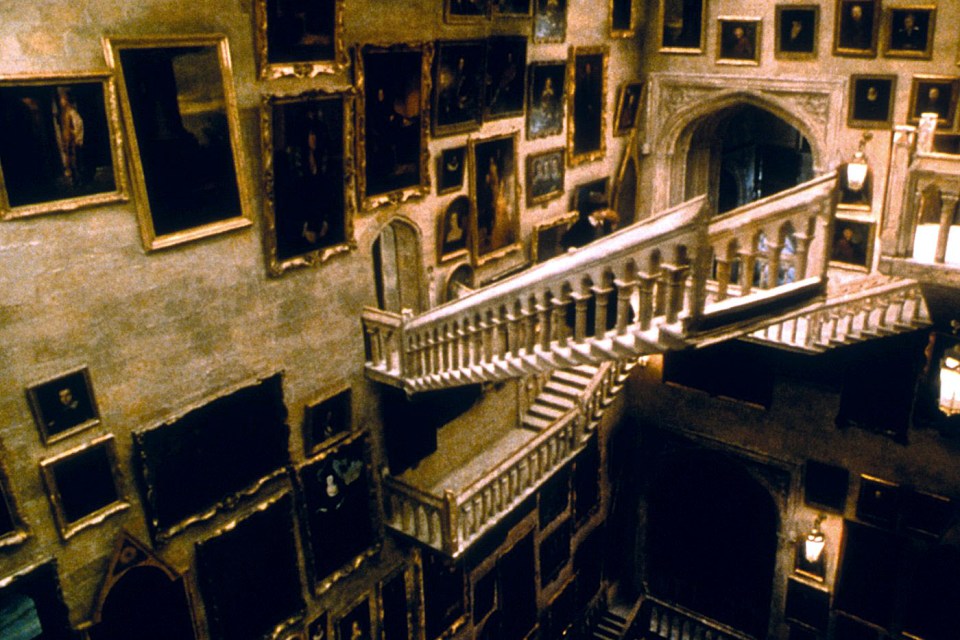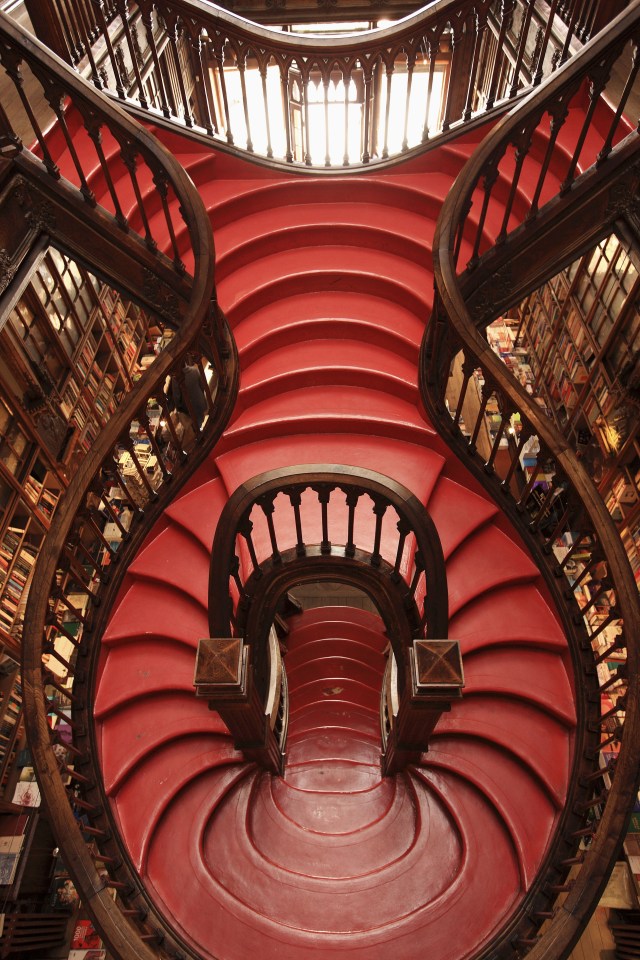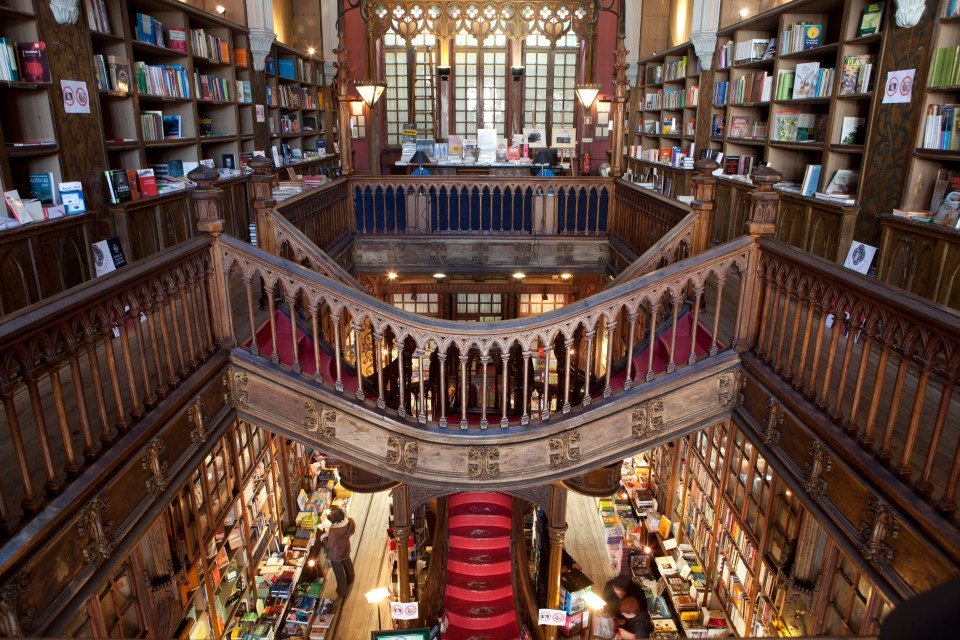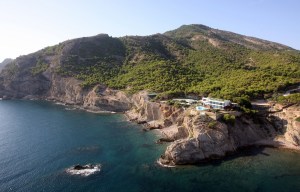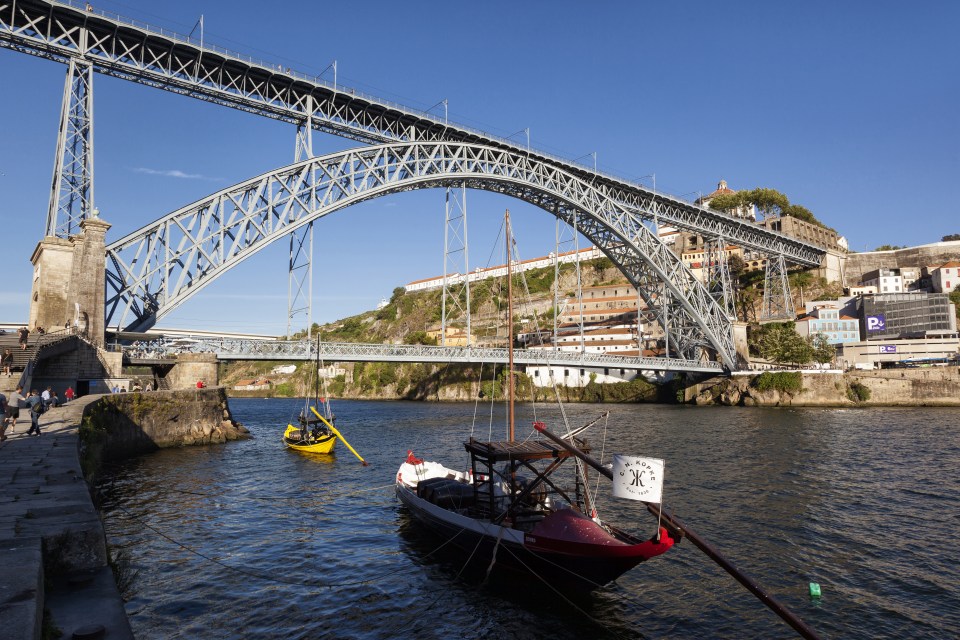Discover the stunning bookshop in Portuguese city of Porto that inspired JK Rowling to create Hogwarts

PORTO has long been viewed in Portugal as a poor relative living in the shadow of cosmopolitan capital Lisbon.
Lisbon locals are often perceived to look down their noses at the second city and its natives. What is the Portuguese translation for “It’s grim up north”?
JK Rowling knew better.
Back in the Nineties the author lived and taught in the city — and the architecture of Hogwarts is said to have been inspired by one of its bookshops.
The shop, called Livraria Lello, is now a must-see for fans of Harry Potter and spin-off Fantastic Beasts, whose movie version starring Eddie Redmayne has just come out.
It opened back in 1906 and its opulent decor and carved stairways look straight out of a computer-generated fairytale. However, perhaps the most famous image of the city is the Maria Pia Bridge.
The huge steel construction was designed by legendary French architect Gustave Eiffel, most famous, of course, for being the brains behind the Eiffel Tower in Paris.
One of the best ways to get a good view of this engineering triumph is to take one of the many boat tours that cruise along the river Douro, also taking in the other five bridges that led to the city being called Cidade das Pontes — City of the Bridges.
The striking Maria Pia connects Porto to Vila Nova de Gaia, which is, strictly speaking, a separate city altogether — as locals living south of the river are only too happy to point out.
Ironically, Gaia is where most of the huge cellars that contain the city’s most famous export, port wine, are located.
Lots of the companies that operate these cavernous cellars offer tours and tastings.
And we had an interesting trip around the Sandeman estate, where we learned that it was, in fact, the British who “invented” port wine.
It became very popular in England around 1700, when war with France deprived the country of its main source of wine. Merchants needed to find another one fast and came up with the crafty idea of fortifying Portuguese wine from the Douro valley with brandy so it would survive the long route by sea to England.
The levels of ingenuity we Brits have to make sure we get a drink is quite remarkable. Coming from Glasgow, I was more or less raised on a fortified wine called Buckfast, so port’s sweet and strong taste evokes fond memories of my misspent youth.
Porto’s historical centre was made a World Heritage Site by Unesco in 1996 — and it’s easy to see why.
The panorama of the city from the cathedral, with its chaotic medieval architecture and red-tiled roofs, is worth the visit alone.
But the best thing about the place in my opinion is that it also possesses a slight urban edginess.
It can very quickly change character from steep, windy historical streets to slightly more metropolitan grime in a way that is both surprising and charming.
It’s funny to see washing hanging in the old, narrow streets and the bustle of city life going on with little or no respect for its own historical status. It has a lively atmosphere and doesn’t feel just like a museum for tourists. The nightlife is decent too, though be prepared for a flashback to the smoggy old days of people brazenly smoking in bars.
RELATED STORIES
Unsurprisingly, there are also plenty of tours to the wine-growing regions of the Douro valley.
We venture to the Honra de Azevedo wine estate, where my cultured palate is once again put through its considerable paces.
The place is kitted out nicely and guests can stay in a selection of creatively decorated rooms.
And best of all, you don’t need to worry about missing the carry-out shop closing.
Of course Portugal also has mile upon mile of coastline and, while oop north the waters might be a bit chilly for a casual dip, the town of Viana do Castelo has some spectacular scenery.
The Pousada De Viana Do Castelo hotel sits on top of Mount Santa Luzia overlooking the coastline and is the best possible vantage point to take in the ocean view.
As it is on the coast, the hotel also boasts an amazing range of seafood, and the octopus in particular has a feel and taste that suggests it has been wrestled from the sea directly to the table.
So while the Lisbon hipsters may sneer at poor old Porto and the north of the country, categorising it as some sort of Iberian version of Burnley is selling it rather short, to say the least.
It’s more flat whites and pastries than flat caps and whippets.
And if you fancy visiting somewhere a little off the well-beaten tourist track, you couldn’t do too much better.
GO: PORTO
TAP Portugal flies direct from Gatwick to Porto twice daily, prices start at £43 one way including all taxes and surcharges. For further information, visit or call 0345 601 0932.




